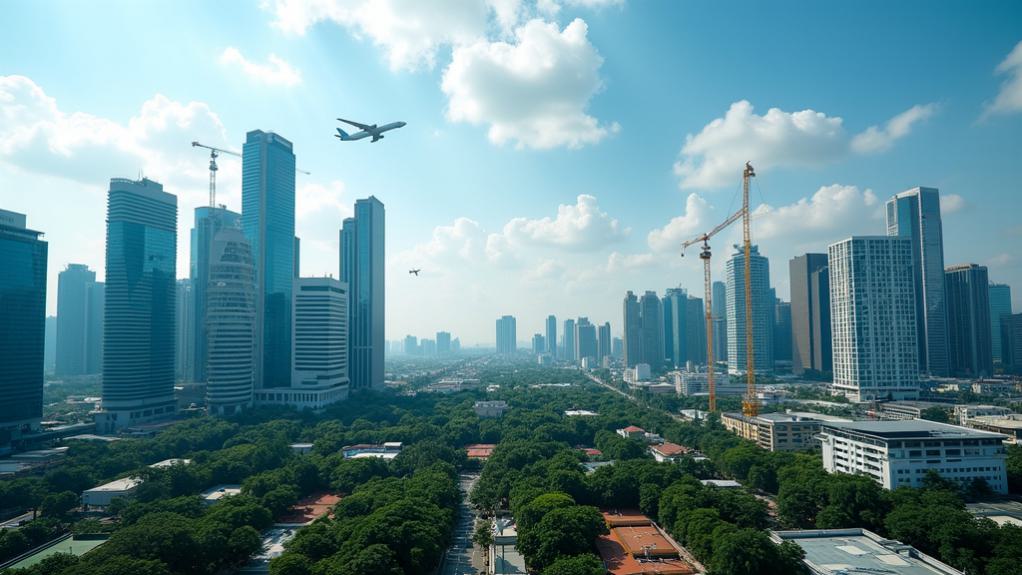As Singapore grapples with its perennial land scarcity challenges, the Civil Aviation Authority of Singapore (CAAS) is spearheading a groundbreaking initiative to revise building height restrictions near airports and airbases, potentially transforming the nation’s urban landscape by August 2025.
Transport Minister Chee Hong Tat’s announcement on May 22, 2025 outlined how residential structures could potentially rise by up to 15 additional storeys, while commercial and industrial buildings might gain up to nine storeys in height.
Transport Minister announces game-changing height increases for residential and commercial buildings near airports, addressing Singapore’s land scarcity challenge.
The ramifications for property development are substantial, with industry analysts projecting that these adjustments could yield a remarkable 100 to 200 percent increase in gross floor area for residential developments. This vertical expansion represents one of the most efficient mechanisms to increase Singapore’s liveable space without acquiring additional land, addressing a fundamental constraint in the city-state’s development trajectory.
Current regulations mandate CAAS consultation for developments within designated green zones, with explicit requirements for tall structures such as antennas and construction equipment like cranes. For red zones, consultation is only necessary when proposed buildings exceed 150 meters above mean sea level.
These protocols will undergo significant modification under the new global standard expected to take effect in August.
Property market observers have characterized the height limit review as a “game-changer” for redevelopment opportunities in proximity to Singapore’s airports. Properties near such developments could see increased rental yields similar to high-performing areas like Geylang. The changes may particularly benefit older commercial buildings near Paya Lebar air base, enhancing their redevelopment potential. The initiative represents a substantial update to standards that have remained largely unchanged since the 1950s technological era, necessitating a comprehensive review to reflect modern aviation capabilities. Professor Sing Tien Foo from NUS Business School is conducting analysis to quantify the potential increase in residential units and commercial space resulting from these regulatory changes.
The situation mirrors Malaysia’s experience, where building height restrictions near Subang International Airport were lifted in 1998 after commercial jet operations relocated, subsequently enabling construction of structures up to 33 floors or approximately 150 meters.
Similarly, Singapore’s strategic adjustment of height restrictions will likely release substantial redevelopment potential, increase property values in affected areas, and optimize land utilization through vertical development—a critical consideration for a nation where buildable land remains a finite and precious resource.





